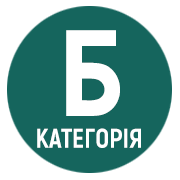PHRASEOLOGICAL UNITS OF THE UKRAINIAN LANGUAGE WITH A ZOONYMIC SEMANTICS COMPONENT AS SIGNS OF SECONDARY NOMINATION
DOI:
https://doi.org/10.32782/2412-933X/2024-XX-4Keywords:
secondary nomination, phraseological unit, zoonymic component, phraseosemantic field, denotation, connotationAbstract
The article explores the primary elements of secondary naming principles and their semantic execution within phraseological units containing zoonymic components, serving as conveyors of national culture. The author conducted an analysis of phraseological fields associated with conceptual aspects of the zoosemiotic system in the Ukrainian language. The arrangement of core and peripheral language units is established within these domains. Due to the varying connotations of the zoonym component-intensifier in the composition of phraseological expressions, zones of intersection between different fields are identified. The author underscores the significance of the animal world for humanity, highlighting their close connection. Particularly, humans have long-drawn analogies between themselves and animals, which have consistently found reflection in language. The appellative vocabulary related to the animal world is integrated into anthropocentric fields. Simultaneously, its semantic spectrum broadens from extensional, nearly equivalent to terminological meaning, to intentional. The intentional sphere encompasses all additional connotations arising from isotopy, including both figurative (surface) and thematic (deep), along with allophonic aspects. Within the realm of nominative fantasy units, a distinct isotopy is established, which, unlike combinatorial phrases (which are empirical in nature), is allophonic. Combinatorial or empirical nominative units emerge from the naming of fragments of objective reality, as perceived by the ethnic group during the process of cognition. Unlike imagination, which also plays a role in the cognitive process, empirical signs of nomination involve a form of reflection, albeit not a direct mirror reflection, but one blended with interpretation. The semantic and socially determined status of the zoonymic component is marked by its semantic fusion with other components of the phraseological expression. This fusion is characterized by a two-level denotative correlation of figurative units, enabling the tracing and comprehension of the mechanism behind the emergence of a linguistic image. The semantics of phraseological units containing zoonymic components encompass both denotative and connotative aspects. Particularly, it involves the reinterpreted naming of various objects and phenomena in a person's life, as well as their moral qualities. Connotation in this context functions as an evaluative element of imagery.
References
Голубовська І. О. Етнічні особливості мовних картин світу. Київ : Логос, 2004. 284 с.
Баран Я. А. Фразеологія у системі мови. Івано-Франківськ : Лілея-НВ, 1997. 175 с.
Івченко А. О. Українська народна фразеологія: ономасіологія, ареали, етимологія. Харків : Фоліо, 1999. 304 с.
Скрипник Л. Г. Фразеологія української мови. Київ : Наукова думка, 1973. 280 с.
Пазяк М. М. Українські прислів’я та приказки. Київ : Наукова думка, 1984. 203 с.





